Flying Lotus Bombs Cosmic Horror in Ash
A disappointing spectacle that tries to compensate for weak storytelling with strong visuals.
Ash
1 hour 35 minutes
Directed by Flying Lotus
I really wanted to like Ash, and the reviews I read ahead of watching this cosmic horror-infused sci-fi flick suggested maybe I would. I wasn’t familiar with director Flying Lotus beforehand, but he contributed a segment for the V/H/S/99 found footage horror anthology that I enjoyed, so I was cautiously optimistic.
That was a mistake.
Apart from some truly stunning visuals and intriguing design choices, I found Ash fundamentally tepid, like having a bartender slide you a beer that’s flat by the time it reaches your palm and spills a lukewarm lite brew all over your hand. The anticipation builds seemingly just to let you down.
If you haven’t seen it, there are ample spoilers below.
The first thing about Ash is that it’s one of those films that a lot of critics present as a Michaelangelo. There aren’t many negative reviews from the professional commentariat. Zachary Lee of RogerEbert.com gave it three stars out of four and hailed it as the ‘“Dead Space’ film we never got, ‘Prometheus’ on an acid trip with a dash of ‘Solaris,’ all seeped in enough bisexual lighting to give ‘Blade Runner 2049’ a run for its money.”
I don’t know what Lee means by “bisexual lighting,” but I can assure you that his assessment is divorced from reality, and I have to assume the author was under the influence of drugs or the parasitic entity that stars as the film’s antagonist.
Again, aesthetically, Ash is gorgeous. It is comparable to Alien: Romulus in that regard which, ironically, suffered from the same flaws as Ash—namely, a weak script, flat characters, and an ultimately banal villain.
The plot ponderously unfolds in a non-linear fashion, jumping back and forth with unsettling dreams and illusions interspersed throughout. The tension is built and sustained by these visions of horror. A gory face peering from the dark, there one instant and gone the next; a woman smiles, then dissolves into a hideous, shredded mess of bone and sinew. Some of the body-melting images seem right out of Street Trash (1987).
It works at first. But it becomes evident that these visuals are a crutch for a weak imagination, like a sleight of hand.
The story goes like this…
Humanity is running out the clock on Earth and must find a new home or consign the species to extinction. It hurtles into the unknown corners of the cosmos in search of viable planets. Mankind sends seven desperate sorties out to the furthest reaches of space in a race against oblivion. Only one mission bears fruit, and what a miraculous find indeed: KOI-442, or “Ash,” an eerie world covered in burning volcanos and jagged rocks that, implausibly, has an atmosphere that is nearly breathable to humans. Powerful sandstorms sweep a surface dotted by monoliths that levitate beneath a sky that seems pregnant with the kaleidoscopic dreams of a sleeping god. But it is habitable. A bead of hope in the void.
The six researchers who alight on Ash soon find that they are not alone. Others have laid claim to this strange and stark place. The team discovers that the planet is actually in the process of being terraformed by aliens. The poor writing somehow manages to fumble this part.
Upon discovering an enormous piece of extraterrestrial hardware unlike anything earthlings are capable of constructing, one of the team members shouts, “We did it, guys! We did it!” It’s really such a strange line to write as a response to stumbling on unfathomably advanced technology created by recondite beings whose existence until that very moment was in doubt. There’s no sense of awe or fear or concern at the realization that we are not alone, just a baffling sort of assumption that whoever put those structures there won’t mind if humans take them.
It’s followed up by Riya (Eiza González), the main character asking, “How deep is it?”
“Hang on, let me find out,” says Davis (Flying Lotus).
You’d think Davis would utilize some sort of advanced survey device. Maybe ask the space station orbiting the planet for an assist. But nope, he takes a huge rock and drops it down into the incomprehensibly advanced terraforming device. Like a child.
Well, the machine activates, conducting what seems like a purge, and shoots the stone directly back into the face of the sender at supersonic speed, killing him in a spectacularly gory fashion. You really can’t blame the aliens.
That incident, plus the discovery of a slithering lifeform that is growing in the walls of the habitat, causes Brion (Aaron Paul) to descend from the orbital station above Ash in a chunky lander. The team debates what to do next, with Riya insisting they remain planetside, stay the course. She then decides to tear a little piece of flesh off one of the slimy tendrils enveloping the facility and studies it without telling anyone. Why would a veteran researcher 1,200 light years away from help do something like that? It’s not like she undergoes a gradual psychological deterioration. She just suddenly thinks it’s a good idea for some reason and says “this could be our answer” when a colleague catches her in the lab. Answer to what?
What happens next is a cross between Life and The Thing, as the creature commandeers the bodies of the crew and uses one team member to kill another. Also, the alien knows karate. I’m not kidding. There’s a fight sequence that looks like something out of John Wick, complete with a clean roundhouse kick. Later, it drops the kung fu and attacks like a berserk squid, exploding out of a victim’s body and transforming into a tentacle monster. It’s never clear why it didn’t do that in the first place.
During the chaos, Riya kills an infected Kevin (Beulah Koale), with whom she is apparently in love, although their relationship is never meaningfully explored. It is so bereft of eros that it may as well have never made the final cut. Lotus and Jonni Remmler, the writer, seem to think that mere crumbs of love rather than the real thing are enough to break our hearts when Riya dispassionately dispatches Kevin. There’s more chemistry between Ellen Ripley and Corporal Dwayne Hicks in Aliens (1986).
The parasite passes to Riya, who falls unconscious after helping the last surviving teammate, Clarke (Kate Elliott), escape. The film opens with Riya rolling awake, a bloodied amnesiac on the floor of the wrecked habitat, the bodies of her colleagues strewn about.
Riya cannot remember what happened on Ash and has hardly any recollection of her own identity, which is made clear to the audience with thoughtful bangers like, “Who am I?” She’s unusually calm for being surrounded by corpses in a shoebox on an alien world and not having any memory of the why or how or what.
Brion appears to arrive soon after things get underway. He insists that the two must return to the orbital station, but it’s clear that all is not what it seems. Brion is guarded. Hiding something. That’s because he’s not Brion at all—he’s the creature. Or rather, he’s a hallucination created by the parasite in Riya’s head. It reveals to her, in a very businesslike fashion, that it is part of a hive mind that assimilates other beings. The way Lotus depicts it as it communicates with Riya reminds me of the Overmind’s eye in StarCraft.
The being generously spells out its motives and intentions. “This is our planet,” it says. “This is our planet, our investment.”
“We will not let you take it from us.”
It seems the humans ran afoul of extraterrestrial venture capitalists.
The cosmic horror evaporates, and the interaction between Riya and the entity takes on the quality of a Zoom call with a recruiter as it asks her to join the hive mind. As if realizing the tension of the unknown has been lost, Lotus tries to shock the audience with one last fight sequence inspired by The Thing after Riya has a Medbot that speaks with an amusingly thick Japanese accent roots around in her head and yanks out the parasite. Cue the Medbot playing audio of small children shouting, “Yay!” This actually happens, and I am sorry to say that the Japanese Medbot has the most personality of anyone in the film.
You never feel emotionally invested in the survival of Riya or anyone else. You’re not really upset to discover Brion actually died in the initial chaos that left Riya unconscious. Lotus also decided to make Brion die a pathetic coward’s death, which was an egregious misuse of Paul, the most talented member of the cast. Even Clarke, who could have had an interesting part before she reappears and is killed, is totally unsympathetic, despite the fact they make her seem like a central figure at first.
But Ash’s most profound storytelling failure comes vis-à-vis cosmic horror as a genre.
Cosmic horror doesn’t have to occur in science fiction settings, although that seems like a natural fit. You can encounter it in a Gothic police procedural set in Louisiana like the first season of True Detective, or aboard a doomed German U-boat that is being inexorably drawn to the bottom of the ocean toward some incomprehensibly ancient fane by an equally incomprehensible force, like in H. P. Lovecraft’s “The Temple.”
It’s less dependent on specific environments than it is on psychology and atmosphere. The “cosmic” that precedes horror does not necessarily mean outer space, although the monstrosities in question do often lurk in the black gulfs between the stars. Rather, that term is perhaps best understood as a reference to cosmography—that is, the calling into question of our place in and understanding of the observable universe. The “horror” in cosmic horror is that confrontation with the unknown and unknowable, the shattering realization that not only are we not alone, but that we share the cosmos with beings whose motives are beyond our comprehension and are indifferent or outright hostile to our existence. We are a nuisance. Playthings. Pawns. Insects writhing beneath their dreams. In an essay on the genre published by Weird Tales, James A. Moore writes that the true scale and scope of cosmic horrors are “too large for human minds to understand, and any attempts at comprehension are futile efforts at best.”
“Once again leaning into the inspect metaphor, understanding the mind of a cosmic-level entity is like an ant or flea trying to grasp comprehension of quantum-level existence,” Moore adds.
The morphological backbone of cosmic horror lies in the oppressive psychic ambiance of epistemological terror. It is for that reason that human encounters with cosmic horrors will often result in insanity.
The key is revealing enough for you to understand that you are in the midst of something whose existence is ungraspable without completely pulling back the curtain of incomprehension because cosmic horror ceases to be cosmic the moment we identify human motivations and concerns in the inhuman. Some good and recent examples can be found in Annihilation (2018), which draws heavily from Lovecraft’s short story “The Colour Out of Space,” and The Void (2016), a criminally underappreciated movie whose villain was basically copied and pasted into Stranger Things years later.
And that is the fatal flash of Ash: after spending the whole film building up the entity with nightmarish visions and images, it is reduced to essentially a landlord trying to evict some squatters, which it explains to the audience with the help of plain English subtitles. Think Cthulu telling you that he wants you off his lawn.
You might even say that Ash is indicative of vibes-based moviemaking. It’s heavy on the vibe of cosmic horror—the visuals, the moody music, and so on—but anemic the substance.


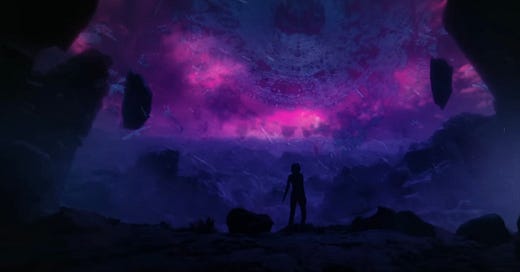



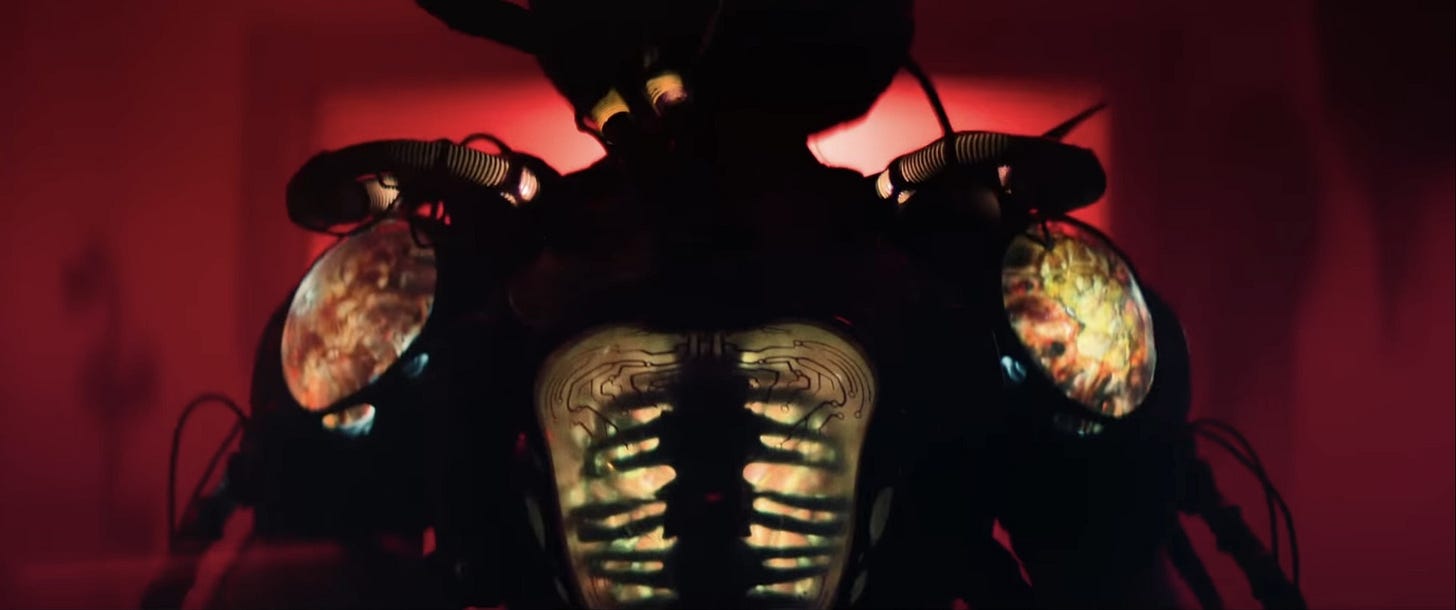
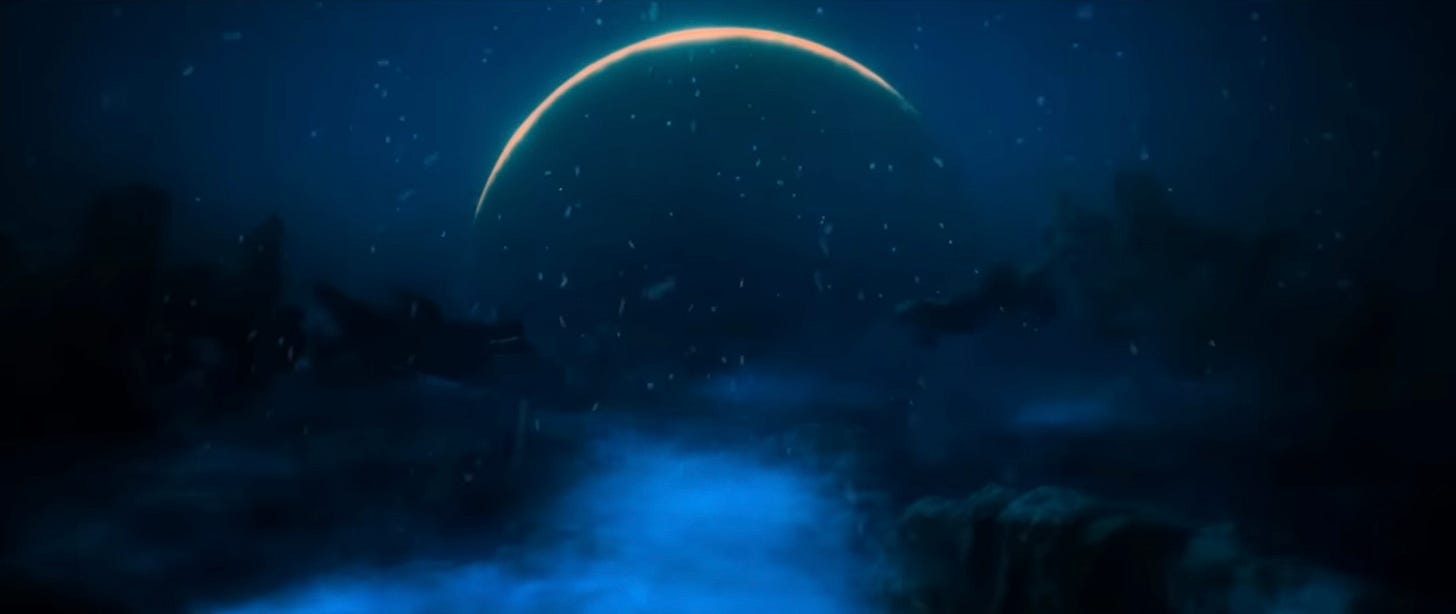
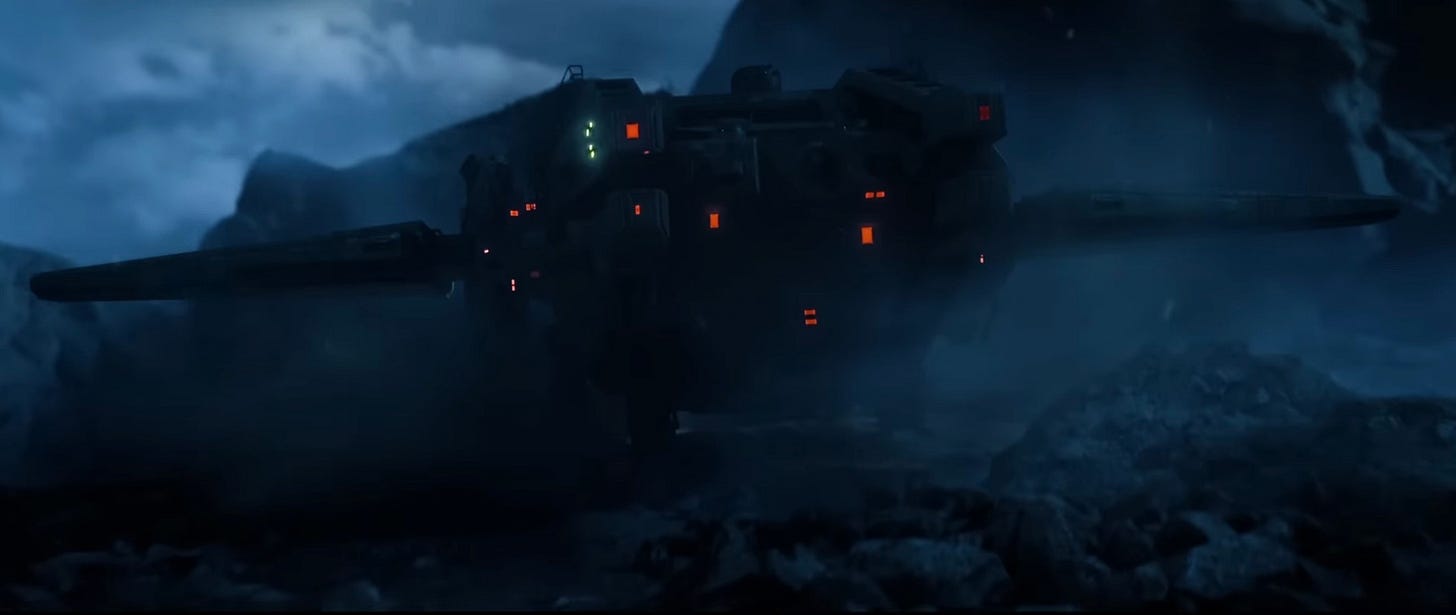
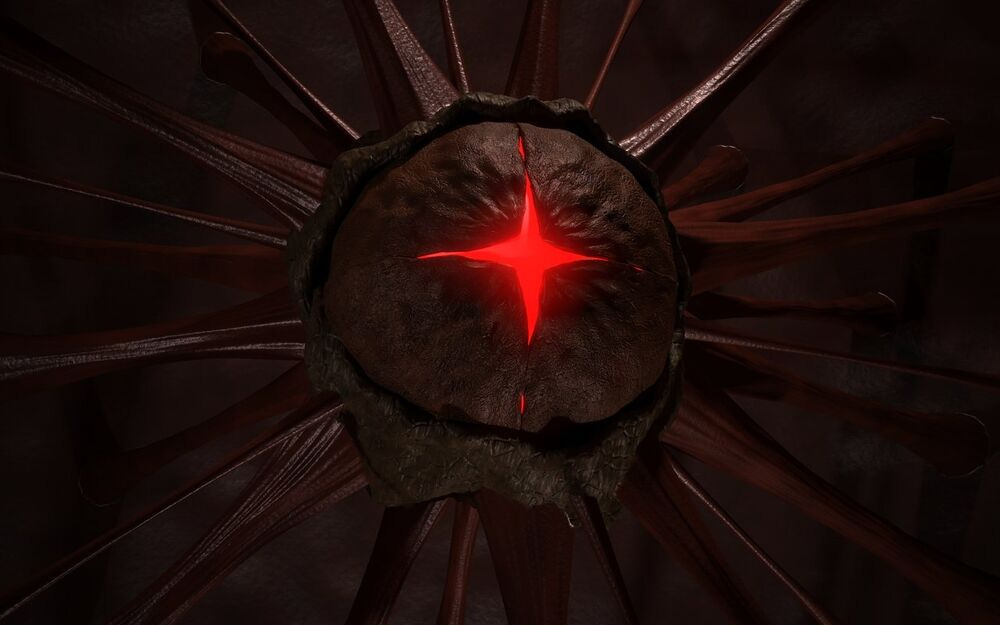
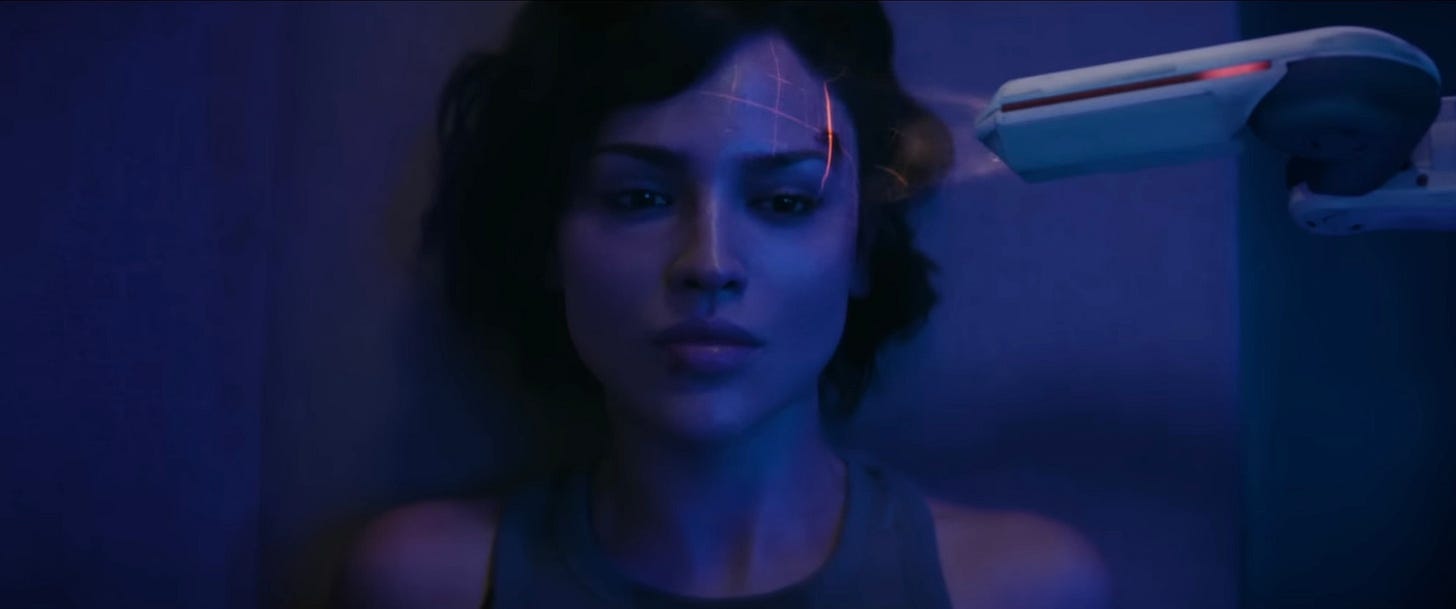
The worst thing to happen to science fiction was the green screen.
I started Aliens Romulus the other day and I stopped watching, not because it was bad but because I found I had to pay more attention than I was giving it. However, I could tell even half an hour in, what I was promised as a "returning to the roots of Ellen Ripley" was far from that.
The original Aliens movie managed to develop the characters in a few lines (depending on some well worn character types, yes, but still) and tell a story all in a world where everything you see on the screen had to be created by hand in some way. The story had to be good to carry the picture because there were limitations on the scenery and the monsters. Whatever you thought of the later Alien movies (up to Alien Resurrection), they were also forced to rely on story telling. Same thing with movies like Event Horizon or Super Nova. There had to be a story because the effects weren't going to carry the movie.
I honestly think people have forgotten how to write a good movie, with some few exceptions. They have no idea why the old movies worked.
Just FYI, in case you didn't know, Annihilation was based on the first of a series of books collectively called the Southern Reach series, by James VanderMeer. The movie is actually a good adaptation given the limits of turning movies into books, but the books are far more psychologically driven. I've not seen the source you cite, so I won't say that VanderMeer didn't "adapt" it for his use, but the movie itself is a full-on adaptation of a written work.
Thanks, that saved me 95 minutes of time better spent doing whatever.